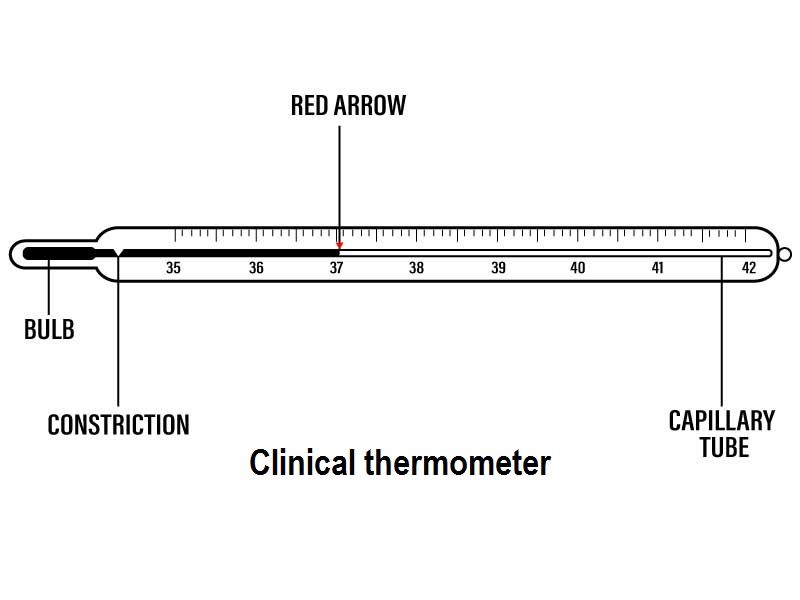The clinical thermometer, also called the medical thermometer, is a device used to measure the human body temperature.
The measurement of human body temperature is important in common medicine. It serves as a general indicator of health and wellness. This is why the usage of thermometers becomes important, to measure human body temperature.
Index
History
The earliest use of thermometer-like devices dates from the late 1500s, made by Galileo Galilei. It was made using water as an indicator and was not very accurate. Later versions of the thermometer used alcohol instead of water, which provided better results.
Daniel Gabriel Fahrenheit, who also designed the Fahrenheit scale of temperature, developed mercury and alcohol versions of the thermometer in between 1709 and 1714. These showed quicker responses to body heat and were also accurate. They were used by a few doctors throughout the 18th century.
However, for most of this time period, thermometers were not taken seriously by the medical community at large. This was due to their bulky nature, and unproven record.
Sir Thomas Allbutt designed a more practical version of the medical thermometer in 1867. In addition to this, other professionals in the field showed that temperature measurement can help understand the patient’s medical state. This led to wider acceptance of its usage.
In modern days, the mercury thermometer has been replaced by digital and alcohol thermometers. This is because the mercury thermometer poses a health risk of poisoning, which the others do not.
Working of Clinical Thermometer
The liquid thermometers rely on the expansion of liquids due to temperature. They are fitted with a suitable scale to show the required temperature as the liquid expands.
Digital thermometers use electronic properties of materials to achieve the same end result.
Clinical Thermometer Usage
The thermometer is usually placed under the patient’s tongue or under their armpit for a short duration, so that the temperature is recorded. For babies and infants, rectal or forehead thermometers are used.
Clinical Thermometer Range
The clinical thermometer range lies between 35°C to 42°C, or in Fahrenheit, 90°F to 110°F. This is because it is used to measure human body temperature, which is 37°C or 98.6°F on average.
Diagram of a Clinical Thermometer
The following diagram shows a liquid clinical thermometer, with its parts explained.

- Bulb: Contains the liquid, usually alcohol, or in older thermometers, mercury
- Capillary tube: Allows the liquid to rise to indicate temperature
- Stem: The main body of the thermometer
- Scale: Shows the required temperature
- Constriction (Kink): Maintains liquid level so reading can be taken
- Red arrow: Indicates normal human body temperature
Difference Between Clinical and Laboratory Thermometer
While both are used to measure temperature, there are a few differences between clinical and laboratory thermometers, as shown below.
| Clinical Thermometer | Laboratory Thermometer |
| The range is between 35°C to 42°C | The range is between -10°C to 110°C |
| It is used to measure human body temperature. | It is used to measure the temperatures of lab equipment, materials, etc. |
| It has a constriction (kink) to prevent liquid from flowing back, to take a reading. | There is no such kink. |
FAQs
The range of clinical thermometer is between 35°C to 42°C (90 °F to 110 °F).
The thermometer is usually placed under the patient’s tongue or in their armpit to measure temperature. For infants, other types exist which are used on the forehead or rectally.The thermometer is kept in the required place for a short duration before the temperature reading is taken.
Mercury is toxic and can cause deadly poisoning if it leaks. This is why most modern thermometers use alcohol or are digital thermometers.
A clinical thermometer works on the principle of expansion of matter due to heat. The liquid in the bulb heats up and expands, proportional to the temperature. It rises up the capillary tube.
A properly calibrated thermometer can thus help tell what the temperature is.
